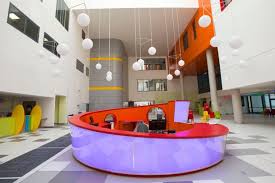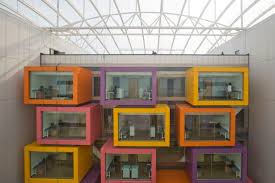The hospital of the future
Patient Room 2020 – NXT Health
The way healthcare is delivered is changing and the familiar patterns are breaking down not only here in the UK but in countries throughout the world. Why? The increased cost of providing healthcare services together with the demands placed by an aging and increasingly sedentary population are putting unprecedented pressures on healthcare systems causing Governments to radically re-think the way services are delivered.
At the same time advances in digital technology are having a profound effect on how patient care. The use of remote patient monitoring, development of sophisticated sensors, health apps and shared electronic patient records – it sounds ironic but patients are beginning to play a more central role in their own care than ever before.
The hospitals of tomorrow will be filled with high-tech medical devices, information systems and wireless gadgets transforming care for the patient and for the carer. But it is not only technology that will define the hospitals of the future but also the design of the hospital space itself. The new hospital structures emerging are paying closer attention to the design of the physical space and the role it can play in improving the patient experience and recovery, as well as improving the daily working environment for medical staff.
This new approach to hospital design can be seen in Scotland’s recently opened super hospital. The £900m Southern General University Hospital, which opened its doors in June, is one of the largest hospital complexes in Europe with the capacity to hold 10,000 staff and patients on its site. Walk into the hospital and you will be greeted with a high gleaming white atrium permeated with strong vibrant colours. Above protrude consultation pods, cleverly designed to be light airy spaces while still retaining the privacy patients’ desire.

Patients rooms themselves are also going through a radical re-design. The patient room of the future will feature recliners in addition to beds in an effort to get patients up and moving. Walls will become moveable to create family spaces. Monitors will become un-intrusive and wireless while sensors throughout the room will provide a continual stream of information regarding the patient’s progress. This information will be delivered direct to the smartphones of healthcare professionals whilst simultaneously being up-loaded to the patient’s electronic medical records.
Some hospitals have already made radical design improvements to patient rooms. At the Methodist Richardson Medical Center in Texas, a newly built $120m facility, all patient rooms are divided into three distinct zones. The area immediately as you enter the room is designed for nurses and other caregivers, the patient zone is in and around the bed, while space has been created near the window to create a family zone.

The design of the patient room has been the focus of a visionary project in the US. Patient Room 2020 lead by think tank NXT Health, is a collaborative design project with more than 35 industry partners. The project’s aim was to integrate the key components of architecture, products, technology and medical processes under a single design process. By doing this the team hoped to streamline the delivery of care, improve patient outcomes and optimise the care-givers performance – in short re-define the medical experience in the 21st century. The project has been highly praised winning a national design award from the Center for Health Design, and is currently on display at the DuPont Corian Design Studio in New York. For those who can’t make it to New York, you can take a virtual tour of the room with Andrew Quirk senior vice president at Skanska, a partner within the project. An infographic of the key features of the room is also available.
The next 20 years are undoubtedly going to be a challenging time for anyone working within healthcare. But, it is also going to be an exciting time of transformation in terms of facility design, service delivery and patient involvement.



